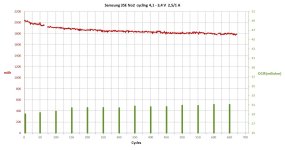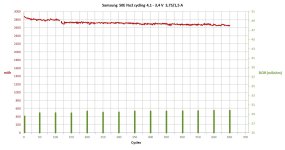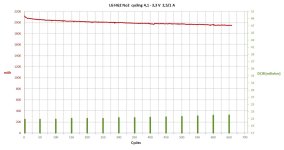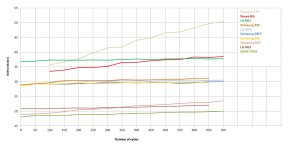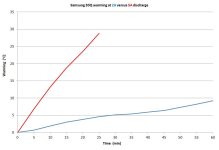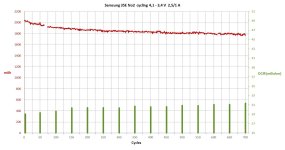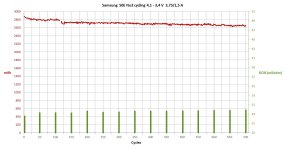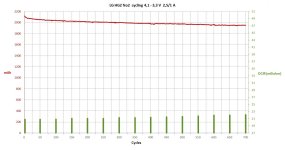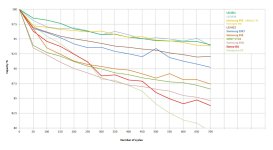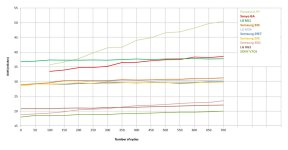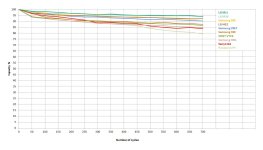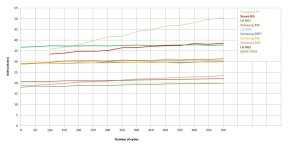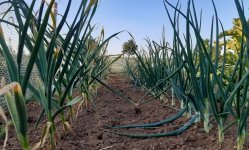Samsung 35E has 87,4 % of initial capacity in the cycling interval 4,1 - 3,4 V / 2,5 A discharge. In standard range 4,2 - 2,5 V at 1 A discharge has 93,6 % of initial capacity and 93,6 % of initial energy.
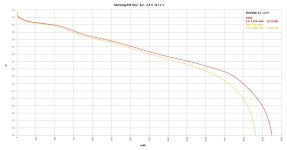
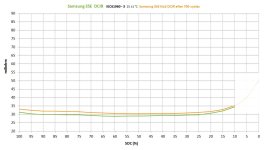
Samsung 50E has 93,8 % of initial capacity (offset variant) in the cycling interval 4,1 - 3,4 V / 3,75 A discharge. In standard range 4,2 - 2,5 V at 1,5 A discharge has 95,7 % of initial capacity and 95,8 % of initial energy.
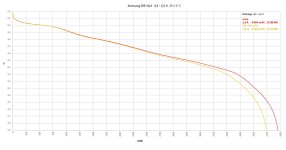
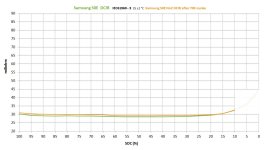
LG HG2 has 92,1 % of initial capacity in the cycling interval 4,1 - 3,3 V / 2,5 A discharge. In standard range 4,2 - 2,5 V at 1 A discharge has 94,7 % of initial capacity and 95,1 of initial energy.

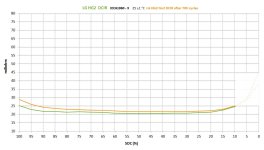
Updated SOC comparative chart after 700 cycles :
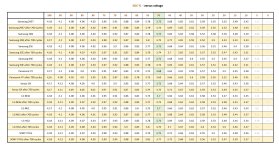
Want to again remind that this was not comprehensive testing but only laboratory comparative testing of cycle aging at particular conditions. Conditions quite favourable to the cells, but on the other hand typical for lot of ebikes. However, in the real life there are other factors affecting the cells degradation, not only cycle aging.
Any opinions, comments, remarks ?


